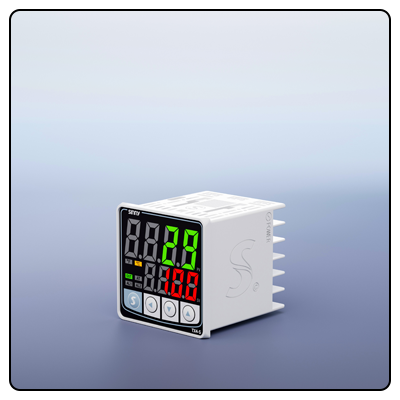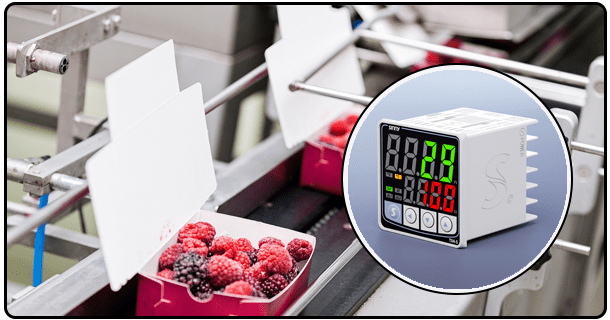How Temperature Controllers Work: Components, Types, and Application
"Learn how temperature controllers work, including their components, types, and applications. Discover the importance of precise temperature control in industrial and consumer settings."
A temperature controller is an instrument designed to maintain the desired temperature within an environment. They serve a number of uses ranging from industrial processes and household appliances, all the way through to everyday applications in which temperature-dependent processes require regulation. Understanding how a temperature controller functions is integral for optimizing performance and safeguarding safety in temperature-sensitive settings.
1. Basic Components
Temperature controllers consist of three essential parts: sensor, controller and control element.
1. Sensor: Sensors provide accurate temperature readings of systems. Common types include thermocouples and Resistance Temperature Detectors (RTDs). RTDs convert temperature readings to electrical signals which can then be read by controllers for interpretation.
2. Controller: If there is any discrepancy between actual temperature and setpoint temperature, and actual temperature in terms of sensor signals received, a signal will be sent from controller to adjust it by controlling element for any necessary changes in temperatures.
3. B: Heating/Cooling Element: The control element such as a heater or cooler adjusts system temperatures according to signals sent from its controller, such as being powered on/off by its on/off switch or modulated power for precise temperature regulation. This could either take the form of simple on/off switches or complex devices capable of modulating power for precise temperature management.
2. Working Principle
Types of Temperature Control Systems There are generally two broad categories for temperature control systems - open loop control and closed loop control.
1.
Open Loop Controls: An open loop control system operates without receiving feedback from its output to its input; instead it follows predetermined instructions without taking into consideration actual output or considering actual results of production based on measurement of temperature changes in real time. A basic heating system would fall under this category of operation as its power and heat switches on and off at regular intervals without taking any temperature readings into consideration.
2. Closed Loop Control (or Feedback Control Systems) are systems which constantly measure outputs and adjust inputs accordingly in order to keep desired setpoints attained. An example would be your home thermostat which measures room temperatures before automatically making adjustments in heating/cooling systems to maintain them at their set temperatures.
3. Temperature Controller Types
There are various kinds of temperature controllers on the market today, each offering specific advantages and benefits for certain environments or situations.
1. On-Off Controllers: On/off controllers are the simplest form of temperature controls. They simply turn their control element on or off when temperatures pass a setpoint temperature threshold - an effective option in applications where precise temperature regulation isn't important.
2. Precise Controllers: Parchett Precise controllers provide variable output that corresponds directly with any deviation between setpoint and actual temperature, thus decreasing oscillations and providing more stable control of temperatures.
3. PID Controllers (Proportional-Integral-Derivative): PID controllers use proportional control combined with integral and derivative adjustments for accurate temperature regulation. Their proportional component adjusts output according to current errors while integral correction corrects past ones while derivative anticipation anticipates future errors for stable temperatures control. These PID controls provide highly precise temperature regulation.
4. Applications
Working Principle and Adjustments [2.11] Temperature controllers work through three primary steps, including measurement, comparison and adjustment.
1. Measuring: The sensor measures and converts current system temperatures to electrical signals for further analysis.
Comparison: Once receiving data from the sensor, the controller uses this to compare it against its desired setpoint and make any necessary adjustments as required. If an inconsistency arises between them, an adjustment calculation process begins within the controller to address it.
3.Adjust: Once receiving the signal from its controller, the control element receives it and adjusts heating or cooling accordingly to bring actual temperatures closer to their setpoint values. This process continues until actual temperatures match those desired in setpoint mode.
Temperature controllers have many uses ranging from industrial processes to consumer goods.
1. Production Processes: Temperature controllers play an essential part of industrial operations like chemical production, food processing and HVAC systems - precisely controlling temperatures is vital in order to preserve product quality and ensure user safety.
2. Consumer Products: Temperature controllers can also be found in everyday household appliances like refrigerators, ovens and air conditioners to help ensure an efficient operating temperature is reached and maintained. These temperature controls use feedback mechanisms to achieve accurate control and ensure optimal operation of these products.
5. Conclusion
In conclusion, temperature controllers are vital devices that ensure precise temperature regulation in various applications. By understanding their components, types, and working principles, we can appreciate their importance in maintaining optimal performance and safety in temperature-sensitive environments.
- How to Build a PID Temperature Controller: Components, Mechanisms, and Applications
- How PID Temperature Controllers Work: Components, Mechanisms, and Applications























